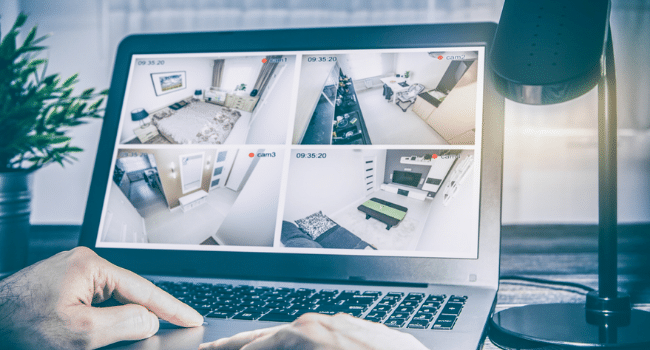Table of Contents
What is Remote Surveillance?
Surveillance technology is more prevalent than you imagine. Apart from surveillance cameras and drones in public areas and RFID tags on your contactless credit cards, monitoring systems exist in many other aspects of our daily life. For instance, the ongoing pandemic skyrocketed the use of remote surveillance tools in the business. Based on ExpressVPN’s study, 78% of employers admitted using monitoring software to track their employees.
When it comes to surveillance and monitoring, an assortment of safety gadgets can be utilized to secure a home or business. A distant reconnaissance framework is a video observation framework that permits customers to monitor a house from a distance.
Numerous private specialists and law implementation organizations utilize the distant observation framework to track and prevent crimes. These people have access to video screens from a distance on their devices. These screens are commonly connected to remote security cameras that have been positioned in unnoticeable areas.
What are the different types of remote surveillance technology?
- Postal services
- Computer surveillance
- Surveillance cameras
- Telephones
- Social network analysis
- Aerial surveillance
- Biometric surveillance
- Data mining & profiling
- Human operatives
- Corporate surveillance
- Satellite imagery
- Identification and credentials
- Radio frequency identification and geolocation devices
Benefits of Remote Surveillance
You might be comfortable with the ordinary film scene of a security officer in a room full of screens with surveillance camera footage. With the technical advancement, clients are able to get to their surveillance camera footage without being in the actual area or a place nearby.
Let’s look at some popular reasons that people employ remote surveillance technology:
- Extra security
Since distant observation permits the client to screen their destinations from any place, it offers more security. Clients can just access and view the video accounts from the on-location video recorder with customary reconnaissance. The cameras will record what’s going on while the landowner is away. With far-off observation, clients can continuously see what’s going on from any web-associated gadget.
- Immediate security alerts
One of the issues with monitoring is that it requires steady observation of the surveillance cameras footage to prevent crime. Despite the fact that far-off reconnaissance permits the client to screen the cameras from any place, most people can’t look at their device all the time. There are therefore functions like movement recognition and sound detection to send immediate alerts to property owners when dubious action is recognized. Clients can be away from their property and cameras but still be alerted when suspicious events are detected.
Remote surveillance risks
- Third parties accessing company’s devices
Even though remote surveillance can track employers’ behavior, there are still aspects employers can’t oversee. Considering that remote workers have family members and friends entering their workspace, employers can’t truly control who has access to the company’s devices. This could easily lead to exposing sensitive data to unauthorized third parties and becoming a victim of the data breach.
- Diminished trust
Although it can boost productivity, constant surveillance may contribute to privacy issues and distrust among employees. Distrust can cause low morale, which can ultimately reflect on the quality of work and efficiency.
- Negative impact on mental health
ExpressVPN’s study showed that 56% of employees feel more anxious due to remote work surveillance, while 41% of them constantly worry they’re being watched. Surveillance can be an additional source of stress for some employees, and it can have a long-lasting negative effect on their mental health. Ultimately, a hostile work environment can lead to a high staff turnover.
Conclusion
Remote surveillance is becoming a popular technology since it offers property or business owners more assurance and adaptability compared to the traditional framework. However, employers should look into the potential adverse effects of this technology on their business and have an open conversation with their staff before implementing surveillance tools.
Read more on KulFiy
What Is IoT Security And How Can Enterprises Protect Devices Against Cyber Threats?
